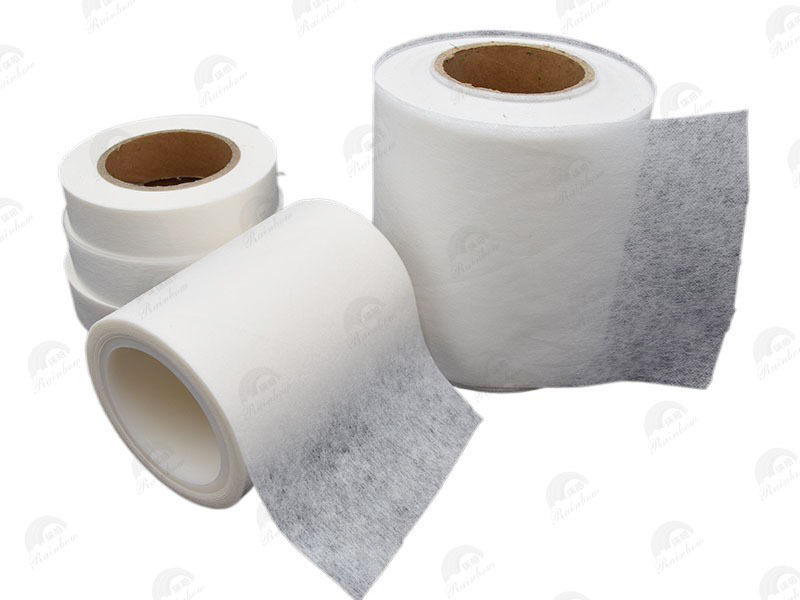Understanding GRS Certified Nonwoven Interlining: A Sustainable Choice for the Textile Industry
Release time:
2025-06-04
In the textile industry, the demand for sustainable and high-quality materials has been on the rise. One such material that has gained attention is GRS Certified Nonwoven Interlining. The Global Recycled Standard (GRS) certification ensures that the interlining is produced from recycled materials while adhering to rigorous environmental and social criteria. This certification is vital for manufacturers aiming to enhance their sustainability credentials and minimize their ecological footprint.
GRS Certified Nonwoven Interlining is primarily used in garment production, providing stability and support to fabrics without adding significant weight. This type of interlining is manufactured through a process that combines fibers using heat, pressure, or chemicals, resulting in a versatile material that is not only lightweight but also durable. The nonwoven structure allows for breathability and flexibility, making it suitable for various applications, from shirts to outerwear.
One of the key benefits of GRS Certified Nonwoven Interlining is its environmental impact. By utilizing recycled materials, manufacturers can reduce waste and conserve resources. This aligns with the growing consumer demand for eco-friendly products, as more individuals are becoming conscious of the environmental implications of their purchases. By incorporating GRS Certified Nonwoven Interlining into their products, brands can appeal to this demographic while contributing positively to the planet.
Furthermore, the performance characteristics of GRS Certified Nonwoven Interlining are noteworthy. It provides excellent dimensional stability, ensuring that garments maintain their shape over time. This quality is essential for maintaining the overall appearance and longevity of clothing, which is particularly important in the competitive fashion market. Additionally, the material is available in various weights and thicknesses, allowing manufacturers to select the right type for their specific needs.
In terms of application, GRS Certified Nonwoven Interlining can be utilized in a wide range of textiles, including formal wear, casual clothing, and even technical garments. Its versatility makes it an invaluable resource for designers and manufacturers looking to enhance their product offerings while adhering to sustainable practices. By integrating this interlining into their designs, brands can not only improve the quality of their garments but also demonstrate their commitment to sustainability.
In conclusion, GRS Certified Nonwoven Interlining represents a significant advancement in the textile industry, combining sustainability with performance. As the demand for eco-friendly materials continues to grow, this innovative interlining provides an ideal solution for manufacturers looking to meet consumer expectations while contributing to a more sustainable future. Embracing GRS Certified Nonwoven Interlining could be the key to standing out in a crowded marketplace, making it a wise choice for any forward-thinking textile business.
GRS Certified Nonwoven Interlining is primarily used in garment production, providing stability and support to fabrics without adding significant weight. This type of interlining is manufactured through a process that combines fibers using heat, pressure, or chemicals, resulting in a versatile material that is not only lightweight but also durable. The nonwoven structure allows for breathability and flexibility, making it suitable for various applications, from shirts to outerwear.
One of the key benefits of GRS Certified Nonwoven Interlining is its environmental impact. By utilizing recycled materials, manufacturers can reduce waste and conserve resources. This aligns with the growing consumer demand for eco-friendly products, as more individuals are becoming conscious of the environmental implications of their purchases. By incorporating GRS Certified Nonwoven Interlining into their products, brands can appeal to this demographic while contributing positively to the planet.
Furthermore, the performance characteristics of GRS Certified Nonwoven Interlining are noteworthy. It provides excellent dimensional stability, ensuring that garments maintain their shape over time. This quality is essential for maintaining the overall appearance and longevity of clothing, which is particularly important in the competitive fashion market. Additionally, the material is available in various weights and thicknesses, allowing manufacturers to select the right type for their specific needs.
In terms of application, GRS Certified Nonwoven Interlining can be utilized in a wide range of textiles, including formal wear, casual clothing, and even technical garments. Its versatility makes it an invaluable resource for designers and manufacturers looking to enhance their product offerings while adhering to sustainable practices. By integrating this interlining into their designs, brands can not only improve the quality of their garments but also demonstrate their commitment to sustainability.
In conclusion, GRS Certified Nonwoven Interlining represents a significant advancement in the textile industry, combining sustainability with performance. As the demand for eco-friendly materials continues to grow, this innovative interlining provides an ideal solution for manufacturers looking to meet consumer expectations while contributing to a more sustainable future. Embracing GRS Certified Nonwoven Interlining could be the key to standing out in a crowded marketplace, making it a wise choice for any forward-thinking textile business.
GRS Certified Nonwoven Interlining
Next Page
Next Page
Latest News
Nantong Rainbow Technology Co., Ltd.
Telephone:+86-13587673537
E-mail:chrislc717@163.com
Address: Group 42, Xizansi Village, Xiting Town, Tongzhou District, Nantong City, Jiangsu Province

Copyright©2024 Nantong Rainbow Technology Co., Ltd. | Powered by www.300.cn
Copyright©2024 Nantong Rainbow Technology Co., Ltd.
Powered by www.300.cn




